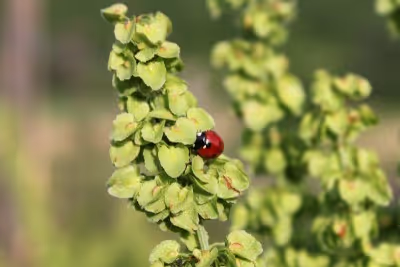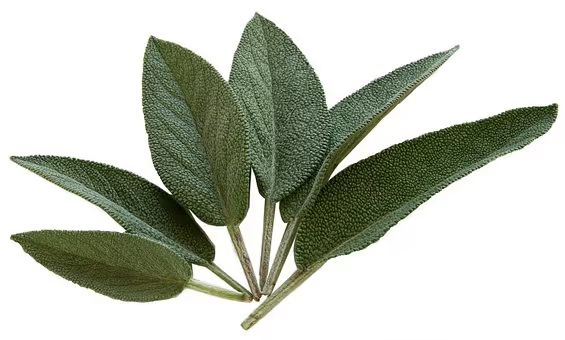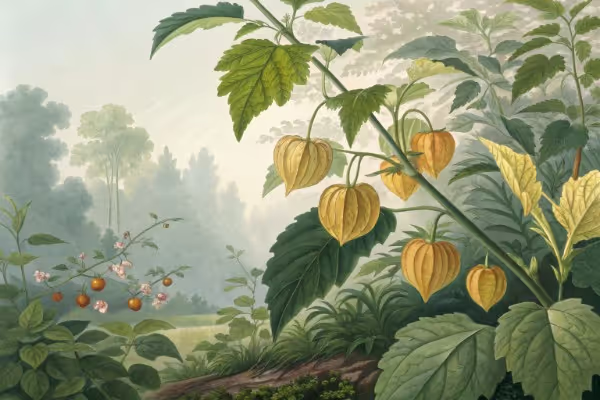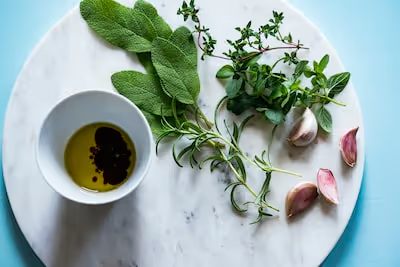Growing Mulberry Bushes for Sweet Backyard Harvests

Growing Mulberry
Growing mulberry lets you snag juicy, sun-warmed berries straight off your own tree. Hardy and unfussy, growing mulberry requires full sun, decent drainage, and enough room to branch out. From sweet pies to backyard shade, growing mulberry rewards patience with delicious bounty—keep reading for simple tips on planting, care, and harvesting your own mulberry bushes.
Cheatsheet: Backyard Mulberries for Abundant Sweet Harvests
🌱 Choose Location
Sun: 6+ hrs/day.
Soil: Loamy, pH 5.5–7.0.
Drainage: Prevent root rot.
🕑 Planting Time
Early spring after frost. Spacing: 10–15 ft (3–4.5 m) apart. Depth: Cover roots, keep crown above soil.
💧 Water & Feeding
First year: 1" (2.5 cm) water/week. Mature: Drought-tolerant. Spring: Compost or balanced slow-release fertilizer.
✂️ Pruning & Shaping
Prune late winter. Remove dead wood. Shape for airflow & size. Keep 6–8 strong stems for bushes.
🐦 Pest & Disease Defense
- Net to deter birds
- Control aphids & spider mites with neem or soapy spray
- Mulch to suppress weeds
🍇 Harvest Sweetness
Pick when glossy, deep purple/black/red (variety-dependent). Yields: Mature bush 10 lbs+ (4.5 kg+).
🥗 Nutrition & Value
- High in Vitamin C, iron, resveratrol
- Boosts immunity, supports eye & heart health
- Fresh, dried, or in jams, smoothies, pies
🛠️ Tools and Products You’ll Need
- Shovel
- Pruners
- Soaker hose or watering can
- Mulch (straw or bark)
- Compost/fertilizer
- Bird netting
- Neem oil or insecticidal soap
- Gloves
-
Growing Mulberry: why this sweet hedge works harder than a tree
I grow mulberries as hedged bushes that top out at 8 to 10 feet, so I can pick without a ladder and net without a circus act. The fruit tastes like blackberry jam with a hint of wine, and the plants shrug off heat, clay, and my occasional neglect.
Species and cultivar map, fast
Morus alba is vigorous, drought tolerant, and often the easiest for bush training, though some forms can be invasive in North America per several state extensions. Morus rubra is native to the eastern U.S., richer in flavor, and hardy, while Morus nigra carries the most intense berry character but prefers warmer, drier summers and hates deep cold.
- 'Illinois Everbearing' (alba x rubra): self-fertile, fruits for weeks, hardy to about USDA Zone 5, excellent for Growing Mulberry as a bush.
- 'Pakistan' (alba type): long fruits, incredible fresh, needs mild winters, Zones 7 to 10.
- 'Shangri La' (alba): big leaves, reliable in humid heat, popular in the Southeast.
- M. nigra types like 'Black Beauty' or 'Noir of Spain': unmatched flavor, slow to bear, happiest in Zones 9 to 10 with dry summers.
- Dwarf options like 'Gerardi Dwarf' and so-called 'Dwarf Everbearing': great in containers, stay compact with light pruning.
Site, soil, and spacing for bush forms
Full sun gives the sugar, six to eight hours minimum. Plant 10 to 15 feet apart for hedged bushes, or 20 to 30 feet if you plan a tree form.
They root into most soils, but I still prep a wide bed with compost and a soil pH target of 5.5 to 7.5. Dig a hole twice the width of the root ball, set at grade, water in deeply, and mulch 3 inches thick, 8 inches off the trunk.
Planting calendar by climate
- Cold winters, Zones 5 to 6: plant bare-root late winter to very early spring while dormant, soil workable, temps above 25 F, minus 4 C.
- Warm zones, 7 to 10: plant in late fall so roots settle in cool soil, or in early spring before leaf-out.
Training a bush that stays pickable
At planting, head the whip at 24 to 30 inches, 60 to 75 cm, and keep 4 to 6 shoots as your future framework. Each winter, remove one or two oldest limbs to the base to renew, a stooling cycle that keeps height in check and fruiting wood young.
I summer prune to a reachable shell, snipping back vigorous leaders to outward buds in July. This tight canopy ripens fruit evenly and keeps birds from treating the plant like a hotel lobby.
Fruiting wood, pruning timing, and crop habit
Most mulberries carry fruit on short spurs on two-year wood, and some cultivars also set on current-season shoots. Practical takeaway for Growing Mulberry: winter prune lightly to maintain structure, then tip back vigorous shoots in summer to stimulate spur formation.
Avoid severe winter cuts on M. nigra, which sulks after hard pruning. Thin, do not hack.
Water and feeding without making a monster
Give 1 inch, 25 mm, of water per week in the first two summers, then taper as roots establish. My bushes get one deep soak during 90 F, 32 C, heat spells and hold fine.
Overfeeding pushes leaves at the expense of fruit. I scratch in 1 to 2 inches of compost each spring and skip high-nitrogen fertilizer unless leaves pale, then I use a light 5-5-5 at 0.25 pound per plant.
Container Growing Mulberry that actually works
Choose a 15 to 25 gallon, 60 to 95 liter, pot with sharp drainage and a gritty mix. I up-pot gradually to keep roots dense and the plant compact.
Water more frequently in summer, sometimes daily, and feed lightly every 4 weeks during active growth. Winter the pot where the root ball stays above 20 F, minus 6 C.
Pollination, flowering, and wind
Most named cultivars are self-fertile, so one plant sets fruit. Catkins open in spring and wind does the work, so tight, fussy pollination rules do not apply here.
If a seedling shows only male flowers, topwork a fruiting cultivar by grafting in late winter. Grafted trees bear in 2 to 3 years, while seedlings can stall for many.
Bird pressure, staining, and harvest tricks
Berries ripen over weeks, which I like for grazing. Birds like them more, so I net early with 0.5 inch mesh and clip it tight around the trunk.
To pick fast, I lay a tarp, shake the limb gently, then sort the haul in the shade. Keep trees away from driveways and patios because fallen fruit can stain like a crime scene.
How much fruit to expect
Young bushes give a few quarts by year two if grafted, and mature bushes can load up. Under good sun and pruning, my hedge yields 15 to 30 pounds, 7 to 14 kg, per plant across the season.
“Mulberries can be prolific to a fault, dropping generous crops that stain pavement,” notes the Morton Arboretum Plant Clinic, which is why site selection matters.
Pests, diseases, and easy IPM
Birds lead the drama, then scale, whiteflies, and occasional spider mites in hot, dry corners. A hard spring spray of horticultural oil while dormant curbs overwintering pests, and a July blast from the hose handles mites on container plants.
Leaf spot pops up during wet summers, so increase airflow and pick up leaves. In the Southeast, popcorn disease can deform fruit on native red mulberry, and sanitation with removal of mummified fruit helps.
Invasiveness and neighbors
Morus alba can naturalize and hybridize with native M. rubra in parts of North America. If that is a concern in your region, choose sterile or female clones and favor 'Illinois Everbearing' or M. nigra where climate allows.
NC State Extension notes that white mulberry is listed as invasive in several states and can cross with native red mulberry, threatening its genetics.
Buying guide, pricing, and what to ask a nursery
- Buy grafted, named cultivars for reliable fruit quality and size control. Seedlings vary wildly.
- Bare-root plants typically run 25 to 60 USD, 24 to 57 EUR, while 5-gallon containers go 60 to 120 USD, 57 to 114 EUR.
- Ask about rootstock vigor, final height, and chill tolerance, and verify the species on the label.
- Reputable sources I have used: Raintree Nursery, Burnt Ridge Nursery, One Green World, and for the UK, Ashridge, Blackmoor, and Orange Pippin Trees.
Propagation that actually takes
Hardwood cuttings 8 to 12 inches, 20 to 30 cm, in late winter root well for M. alba types. Softwood cuttings in early summer also take with bottom heat and high humidity.
I graft onto vigorous alba understock with a whip-and-tongue cut in late winter, then head the scion after push to keep it bushy. Air layering works too and keeps the parent cropping while you clone it.
Nutrition, kitchen uses, and storage
Fresh mulberries run about 43 kcal per 100 g with vitamin C and iron, according to USDA FoodData Central, so this is dessert fruit with benefits. They mash into quick freezer jam, ferment into a light country wine, and dry into chewy trail snacks.
- Freezer jam: 4 cups fruit, 1 cup sugar, lemon to taste, bring to a simmer, cool, freeze flat in bags.
- Drying: dehydrate at 135 F, 57 C, until leathery, then store with a desiccant packet.
Top picks for Growing Mulberry by goal
- Coldest climates, Zone 5 to 6: 'Illinois Everbearing' for long season and dependable set.
- Container and patio: 'Gerardi Dwarf' for tight internodes, easy summer shearing, and big flavor for size.
- Heat lovers with space: 'Pakistan' for striking fruit length and sweet, non-acid character.
- Flavor chasers in mild, dry-summer zones: M. nigra cultivars, worth the wait and the pruning finesse.
- Humid Southeast: 'Shangri La' and heat-tolerant albas that shrug off leaf diseases with airflow.
My field notes from bush-grown rows
A 3-inch woodchip mulch kept weeds down and moisture steady, and earthworms piled in, which showed in leaf color. Netting before first blush beat the birds by a week, and I never lost a crop after that change.
Pruning for a human-height shell changed everything for harvest speed. I now pick two colanders in 10 minutes and still leave plenty for the robins on the far hedge.
Safety and sap
Some people react to mulberry sap during pruning, so I wear gloves and wash up. Unripe fruits can upset a stomach, which I learned once and only once.
Numbers and notes from trusted references
The Royal Horticultural Society advises minimal winter pruning and cautions that mulberries resent heavy cutting, a point I have confirmed the hard way.
“Mulberries are wind-pollinated and often self-fruitful,” notes University of Florida IFAS, which explains their reliability even as solo plants.
USDA FoodData Central lists raw mulberries at roughly 43 kcal per 100 g with carbohydrate around 9.8 g and fiber near 1.7 g, a tidy nutrition profile for a backyard snack.
Frequently Asked Questions about Growing Mulberry
What soil conditions encourage healthy mulberry growth?
Mulberry bushes thrive in fertile, well-drained soil enriched with organic matter. Aim for a soil pH between 6.0 to 6.5—slightly acidic to neutral—to ensure optimal nutrient absorption and vigorous root development.
How much sunlight do mulberry bushes require?
Mulberry bushes perform best in areas receiving full sun, ideally at least 6 to 8 hours daily. While they tolerate partial shade, ample sunlight encourages higher fruit yields and healthier plants.
When is the optimal time to plant mulberry bushes?
Early spring planting—once the ground has thawed and risk of frost has passed—provides ideal growing conditions. In milder climates, mulberry bushes can also establish well in the autumn, approximately 6 weeks before first frost.
How frequently should mulberry bushes be watered?
During initial growth, mulberry bushes benefit from regular, deep watering of approximately 1–2 inches (2.5–5 cm) per week. Once established, they're relatively drought-tolerant, requiring supplemental watering primarily during extended dry spells or heatwaves.
Do mulberry bushes require pruning, and if so, when?
Annual pruning promotes healthy growth and abundant fruit production. Prune during late winter or early spring—before new growth begins—to remove dead, damaged, or overcrowded branches and maintain an open branch structure.
What pests or diseases affect mulberries, and how can gardeners manage them?
Common pests include scale insects, whiteflies, and spider mites. Manage these by regularly inspecting foliage, pruning affected branches, and applying insecticidal soap or horticultural oil if needed. Diseases like powdery mildew can be prevented through proper spacing and pruning, improving air circulation.
When and how should gardeners harvest mulberry fruits?
Mulberries ripen from late spring through early summer, depending on variety and climate. Harvest fruits when they turn fully dark and come off easily with gentle pressure. Picking regularly throughout the harvest period encourages continued fruiting and minimizes fallen fruit under the bushes.
Can mulberry bushes withstand cold climates?
Mulberry bushes display strong cold-hardiness, tolerating temperatures as low as -25°F (-32°C) once fully established. Young bushes benefit from protective mulching around their base during their first few winters to ensure optimal root insulation.
Growing Mulberry is all about patience, sunlight, and a little trust in nature’s wild ways. Give these bushes some space, keep the soil fertile, and you’ll be rewarded with fruit that’s sweeter than any store-bought berry. Mulberries thrive with minimal fuss—just regular water and a good pruning. Once you’ve tasted your own homegrown harvest, you’ll wonder why you waited so long. If you’re bitten by the berry bug, consider adding other backyard favorites like blackcurrant for variety. Remember, the best gardens are built one bold decision at a time. Mulberries deliver, year after year, for anyone willing to get their hands a little dirty.
The Homesteader's Take: Mulberry Bushes for Year-Round Self-Sufficiency
Maximizing Nutritional Value
- Air-dry mulberry leaves for nutrient-rich teas rich in calcium, magnesium, and antioxidants.
- Freeze mulberry harvests within hours to preserve vitamin C content (about 36 mg per 100 g berries).
- Ferment mulberry berries into probiotic-rich beverages for improved digestion and immunity.
Livestock Integration Strategies
- Use mulberry prunings as supplemental fodder—high protein leaves (15-20%) greatly reduce feed costs.
- Plant bushes alongside poultry runs for natural pest control and shade provision.
- Establish mulberries near apiaries to support bee populations with early pollen and nectar sources.
Sustainable Soil Improvement Practices
- Mulch dropped leaves around garden beds—nutrient-dense compost enhances soil organic matter.
- Practice coppicing every 2-3 years to stimulate growth and optimize berry yields.
- Plant nitrogen-fixing ground covers (clover, alfalfa) beneath mulberries for self-sustained fertility.
Innovative Uses Beyond Fresh Eating
- Dry berries into chewy, nutritious snacks packed with iron and anthocyanins.
- Craft homemade mulberry vinegar for culinary uses and natural household cleaning.
- Create mulberry-based natural fabric dyes—yield vibrant purples and deep reds without chemicals.
Find out which plants will thrive in your garden!
Answer a few fun questions and get custom plant recommendations perfect for your space. Let’s grow something amazing together!

start your season





